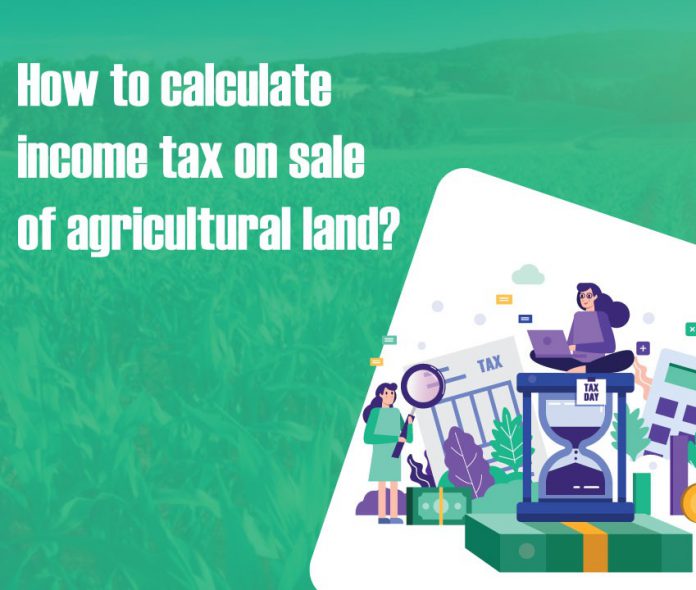Agriculture is the main occupation in India, and a large number of the rural population in India entirely depends on agricultural income. The government has introduced different measures, policies, and schemes to promote growth in the agriculture sector.
Article Content:
- What is Agriculture Income?
- Some examples of agricultural income are
- Some examples of non-agricultural income are
- Classification of Agricultural Income
- Types of Agriculture Income
- When agricultural income is not taxable?
- Tax calculation on agriculture income
- Sale of Agricultural Land
- Section 54B of Income Tax Act, Tax Exemption from capital gain resulting in the sale of agricultural land
As under Article 270 of the Indian Constitution, agricultural income is exempted from tax.
What is Agriculture Income?
Income earned or revenue derived from the sources that include agriculture land, farming land, etc is called agriculture income.
Some examples of agricultural income are:
Rent received for agricultural land, from the sale of replanted trees, from growing flowers and creepers, from the sale of seeds.
Some examples of non-agricultural income are:
Dairy farming, Purchase of standing crop, Poultry farming.
Classification of Agricultural Income:
1. Any revenue or rent derived by the taxpayer from the land which is situated in India and used for agricultural purposes. This revenue or rent is treated as agriculture income.
2. Income earned by the taxpayer from the land which is situated in India and used for agricultural operations in the following ways is treated as agriculture income:
a. Types of Agriculture Income
● Basic Operations: Cultivation of land in the sense of tilling of land, sowing of seeds, planting and similar operations on the land involving an expenditure of human labour and skill upon the land to make the crop sprout from the land.
● Subsequent operations: After the crop sprouts, subsequent operations to be resorted for efficient production of the crop such as weeding, digging the soil around the growth, removal of undesirable growth, tending, pruning and cutting, etc.
b. Any process by a cultivator or receiver of rent-in-kind, which process involved ordinarily employed by a cultivator or receiver of rent-in-kind that results in agricultural produce raised or received by him which can be taken to the market to be sold.
c. The income arising by the sale of such products by a cultivator or receiver of rent-in-kind.
3. Any income received from a building situated near or surrounding the agricultural land in the following ways is treated as agriculture income:
a. The building is in the immediate vicinity of the agricultural land occupied by the cultivator or receiver of rent or revenue. And the building is used as a house to stay or a storehouse.
b. The land is either subjected to the local rate or accounts for land revenue in India and collected by officers.
If the above condition is not fulfilled then the land should not be situated within the area as specified by the government. Followings areas are specified by the government:
● Area which has a population of not less than 10,000, and comes within the jurisdiction of a municipality or a cantonment board.
● In any area within such distance are mentioned below:
| Aerial distance from the municipality | Population as per last preceding census |
| Within 2kms | 10,000 to 1,00,000 |
| Within 6kms | 1,00,000 to 10,00,000 |
| Within 10kms | More than 10,00,000 |
When agricultural income is not taxable?
● If agriculture is only the source of your income.
● If your current year of agriculture income is less than from Rs. 5,000 previous year agriculture income.
● Where you have agricultural income as well as other income but less than the basic exemption limit excluding agricultural income.
Tax calculation on agriculture income:
1. Calculate tax on non-agricultural income including agricultural income as per the current income tax rates.
2. Calculate tax on agricultural income as per the income tax rates after adding the basic exemption limit of an individual.
Now, (1) – (2) is your tax liability for the year.
“Let’s take an example, you earn Rs. 60,000 + Rs. 4,00,000 in the assessment year 2019-20 (Rs. 60,000/- as agricultural income and Rs. 4,00,000/- as salary income).
The calculation of tax shall be as follows:
Step 1. Calculate tax on non-agricultural income including agricultural income as per the current income tax rates. Total income of Rs 4,60,000 (4,00,000+60,000)
| Particulars | Amount |
| Tax on Rs 2,50,000 | Nil |
| Tax on remaining Rs 2,10,000 @ 5% | 10,500 |
| Total Tax | 10,500 |
Step 2. Calculate tax on agricultural income as per the income tax rates after adding the basic exemption limit of an individual.
| Particulars | Amount |
| Tax on Rs 2,50,000 | Nil |
| Tax on remaining Rs 60,000 @ 5% | 3,000 |
| Total Tax | 3,000 |
The tax liability, in this case, shall be Rs. 7,500 (a-b) i.e. Rs 10,500 – Rs 3,00”
*Please note Cess, Standard Deduction, etc will be applicable and are not considered in this example.
Sale of Agricultural Land
Some cases, when capital gain on Agricultural Land is entirely exempt from Income Tax.
- Sale of agricultural land situated in the Rural area in India will be exempt from capital gains as these lands do not constitute a Capital Asset.
- Under Section 10(37) of the Income Tax Act, compulsory acquisition of agricultural land is exempt from tax and not considered as a capital gain.
Section 54B of Income Tax Act, Tax Exemption from capital gain resulting in the sale of agricultural land.
Section 54B gives relief of capital gains to a taxpayer when taxpayers sell his agricultural land and buy another agricultural land from the amount received. The conditions you need to meet to avail the benefit of exemption are:
- Taxpayers have to be an individual or a HUF.
- The land which is going to be transferred must be used for agricultural purposes for a period of 2 years, prior to the date of transfer by the individual or by HUF.
- Individual or a HUF must acquire another land for the agricultural purpose within a period of 2 years from the date of transfer of this land and must not sell agricultural land within a period of 3 years from the date of its purchase to claim an exemption in capital gain.
“Let’s say, you sold agricultural land for Rs. 8,40,000, and purchased new land for agricultural purposes worth Rs. 5,00,000 within two years of the sale of agricultural land. Then, the Long-Term Capital Gains will be of Rs. 3,40,000 (Rs. 8,40,000 – Rs. 5,00,000)
Suppose you have purchased new agricultural land worth more than the agricultural land you have sold for Rs. 9,00,000. Then, the entire capital gains are exempt (Rs. 8,40,000 – Rs. 9,00,000)”













































